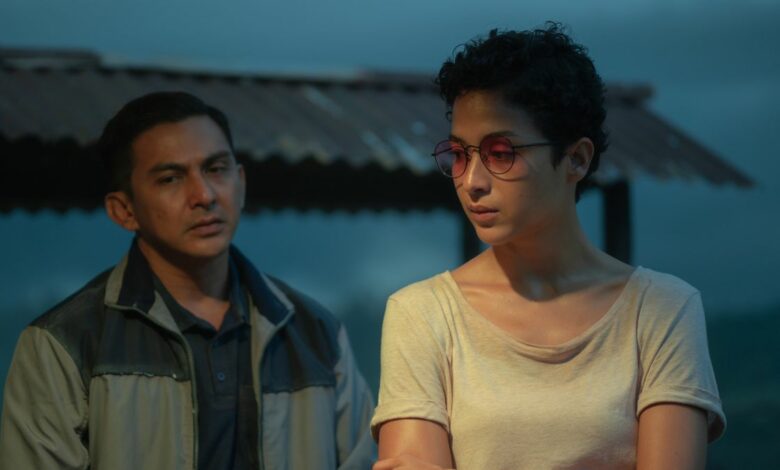Everyone’s sleeping on Netflix’s latest crime thriller, but I loved the atmosphere of ‘Danish murder mystery in Borneo’

One arrival that has gone unnoticed so far among the new Netflix movies coming in August 2024 is Borderless foga murder thriller set in Borneo, on the other side of the Indonesian and Malaysian borders – it doesn’t even have enough reviews to earn a Rotten Tomatoes score. It follows Inspector Sanja (Putri Marino, who is terrific) as an instantly iconic new detective – unmistakable with her close-cropped curls and doctor-prescribed pink sunglasses – as she investigates a strange decapitated corpse left on the border between the countries, which does have a head… just the wrong head.
What follows is an astonishingly dense and thematically interesting mystery that has the dark tones, character motivations and morally ambiguous vibes of an entire Danish murder series like The murder or The bridgebut crammed into less than two hours… and yet somehow it’s not impossible to follow. It’s not satisfying enough as a whole to make the best Netflix movies list, but as a connoisseur of the mid-range detective thriller genre I had a lot of fun with it and would happily watch an annual Inspector Sanja movie where she looks out gloomily over beautiful and foreboding jungle landscapes.

Borderless fog begins with a nice little ‘slice of life in Borneo’ scene, before the body starts the mystery off with a literal bang (on a tin roof), falling onto the border between the two countries. The film immediately moves into the themes that will underpin the entire story, as two police forces argue which one should be involved with the other based on the placement of the border, with the disagreement reaching the point where they not only measure the distance to the exact border, but then wonder where the border really is here in the middle of the forest.
The film’s overarching theme is about things that are caught between two camps, never quite fitting into either. The first body is a mismatched head and torso, which ends up on the border between two countries, and will be investigated by a misfit city cop struggling to fit in with the countryside, partnered by someone who grew up with tribal radicals but has become a cop and is not fully accepted by either side… the film doesn’t want simple archetypes, which also makes anyone who seems simpler, good or bad, immediately arouse your suspicion, because nothing is so simple here in the mist, where cutaway shots of ominous native trees watch over the forest like veiled gods.
All of this also leads to a dense series of plots happening here. After we have our introductions to the above concepts, we have to deal with a victim of a crime that may or may not be a false flag assassination, a local crime boss, a communist hero living in the forest that may or may not be folklore, kidnapped children on a survival trek through the forest, and Sanja confronting her boss about his apparent corruption or incompetence… and these are not spoilers, because it all happens in the first half of the film. While I admit to losing a few threads, the fact that I was able to follow the plot when it was thicker than the foliage of the Borneo jungle is a testament to solid filmmaking.
It looks great at times, too, with a muted color palette and menacing landscape shots that make it feel like a Scandinavian crime drama transplanted to Southeast Asia, while occasionally adding a touch of kinetic energy – a brief boat sequence feels straight out of a Michael Mann film, and I wish the film had brought more of that style to the table, actually. The director, Edwin, is a previous award-winner, and he keeps the film engaging no matter what.
As I said above, I’d call this an instant classic. The threads don’t come together neatly and completely satisfyingly, though it certainly gets dramatic. And more than that, despite the work done to match the themes to the characters, it doesn’t really earn your investment in any of the characters that aren’t Sanja – and you feel like more of her comes from Putri Marino being the stronger performer.
But even if it doesn’t dig deep enough, it scratches the surface of so many different elements that it can’t help but interesting all the time, especially in the way it revels in the complexity of its characters’ relationships with the Dayak tribe, with the history of communism, and with the relationship between Indonesian and Malaysian officials. And like I said, it somehow does all of this in under 120 minutes. What’s the excuse for all those much more basic action movies that can’t seem to get themselves under two and a half hours?




